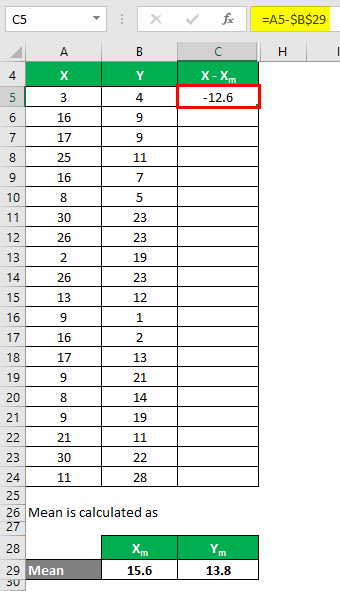

The values can be seen in visuals, where we can also compare both groups. Red = (Table1-average(Table1))^2Īnd this is the formula for correlation measure:Ĭorrel = sum(Table1)/(sqrt(sum(Table1))*(sqrt(sum(Table1)))).Use the correlation coefficient to determine the relationship between two properties. The CORREL function returns the correlation coefficient of two cell ranges. Deviation of asset 1 and a Standard Deviation of asset 2. The formula for correlation is equal to Covariance of return of asset 1 and Covariance of asset 2 / Standard.
#Correlation formula in excel for mac
Green = (Table1-average(Table1))*(Table1-average(Table1)) Excel for Microsoft 365 Excel for Microsoft 365 for Mac Excel for the web More. The correlation analysis gives us an idea about the degree & direction of the relationship between the two variables under study.It sounds scary, but it won´t take more than few minutes. They are going to be calculated separately in three columns, and then new measure will be calculated from them. I used three colors to highlight three parts of formula. We will use this correlation coefficient formula:

So now we are going to work with this table containing two columns of data (spited into two groups A and B, that we can compare, but it is not necessary). I also have to remind that you can workaround this issue by publishing the data to Excel (and calculate it there very simply) or run R script on Power BI data, but both ways have some disadvantages. The way described here is quite long and I´d really appreciate if you add something better to discussion. Quite complex DAX with variables appears:ĭo it yourself (create your own formula and understand how it works) In this table, lets check the dependency of orders on Adwords costs. Pearson correlation coefficient in Quick Measures In this tutorial there are both ways explained. You can use the quick measure, or you can write your own calculation.

In spite of there is no function like CORREL in DAX, the Pearson correlation coefficient can be calculated in two ways. Pearson correlation coefficient in Power BI


 0 kommentar(er)
0 kommentar(er)
